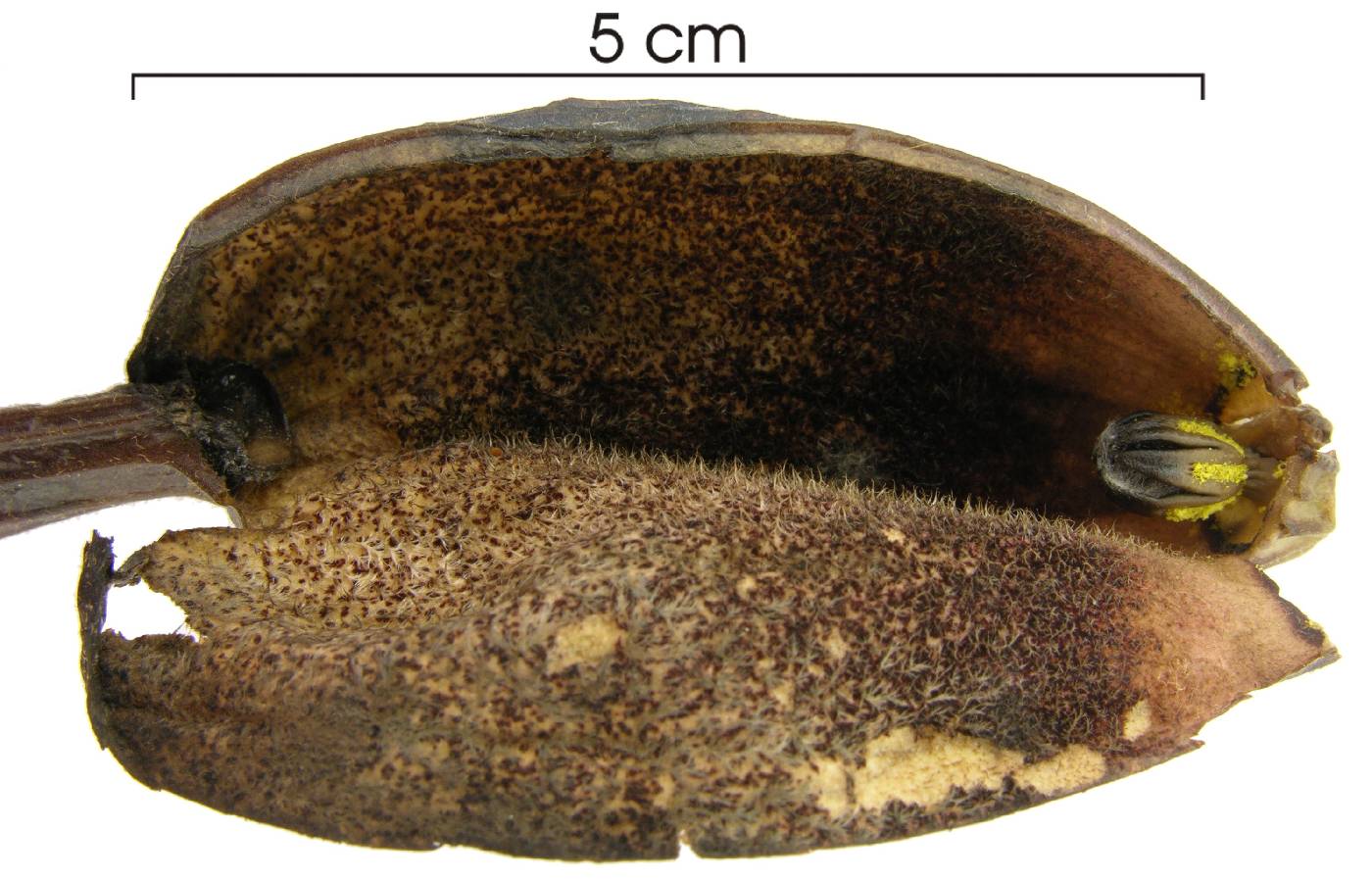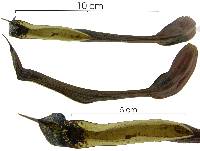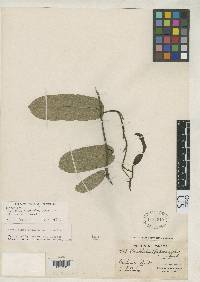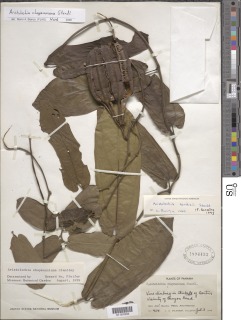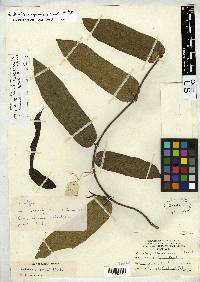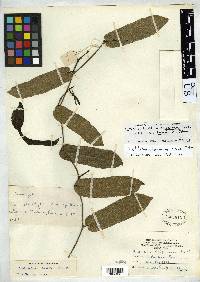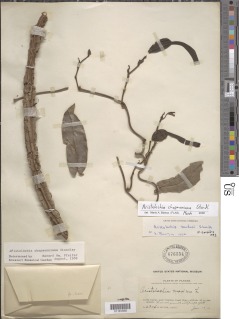

|
|
|
|
Family: Aristolochiaceae
[Aristolochia chapmaniana Standl., moreAristolochia maxima var. cordata Standl.] |
Descripción: Plantas trepadoras o lianas con tronco corchoso y aristado. Ramitas terminales ligeramente cubiertas de pelos. Hojas simples y alternas, de 8-15 x 4-6 cm, ovadas a oblongas, con ápice acuminado, bordes enteros y base cordada. Las hojas presentan pelos y son ligeramente grises por el envés. Inflorescencias en racimos axilares. Flores amarillas y con manchas moradas. Utrículo recto o elipsoide y con nervaduras prominentes. Tubo recto y con una caperuza, limbo unilabiado y expandido desde el tubo. Frutos en cápsulas ovoides, de 10 x 5 cm, septos semejantes a membranas y persistentes después de la dehiscencia. Especies Parecidas: A menudo se confunde con LK arisma Aristolochia maxima LK2 , pero en A. maxima las hojas son diferentes. Aristolochia tonduzii se distingue de otras especies de Aristolochia por el utrículo de las flores con nervaduras prominentes y el tubo con una caperuza. Twining liana, sparsely hispidulous; trunk corky and deeply fissured near ground, to ca 5 cm diam. Leaves alternate; petioles 8-22 mm long; blades oblong-spatulate, acute to obtuse at apex, deeply cordate at base, 10-20 cm long, 3-6 cm wide, glabrate above, inconspicuously short-pubescent below. Flowers solitary, axillary, usually slightly arched, dark purple-brown; calyx expanded into a narrow ellipsoid balloon ca 6 cm long, then constricted into a tube ca 3.5 cm long, the tube split on one side to form an oblong-lanceolate limb to 7 cm long; corolla lacking; stamens 6, the anthers sessile and adnate to style; styles 6, connate; stigmas capitate. Capsules ovate-cylindrical, prominently 6-ribbed, 10-12 cm long, ca 5 cm wide, on a long stipe, dehiscing from apex to base, the 6 valves spreading widely to disperse seeds but remaining attached on both ends, the inner valves diverging through outer valves at apex and attached to outer valves by a ladderlike series of fibers, the fibers acting to slow dispersal of seeds; seeds very numerous, flattened, stacked in 6 vertical rows, the seminiferous part cordate, ca 5 mm diam, bearing 2 unequal pairs of lateral wings ca 2 cm wide, the sides of the wings +/- rounded, the longer pair ca 1.2 cm long, the shorter pair ca 0.8 cm long. Croat 5958, Shattuck 413 (type). Occasional, in the forest and along the shore. Flowers from at least November to January. The fruits, with some seeds, reported from April to September. Capsules may hang on all year. Zone and Panama and from premontane wet forest in Coclé |

